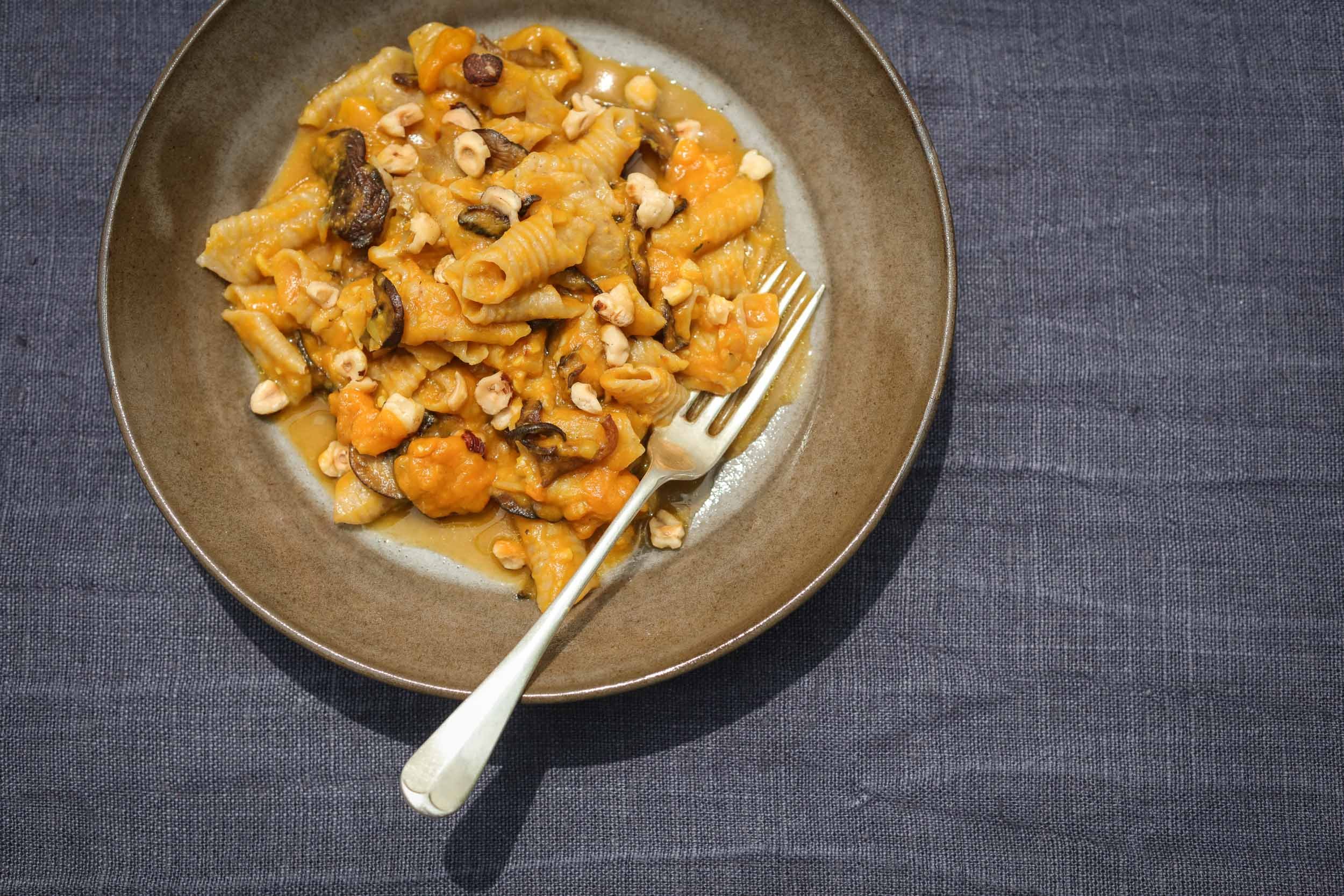Toasted Oat Garganelli

serves 3–4
6 oz. 00 flour (about 1½ cups), plus more for dusting
2 oz. (about ½ cup) old-fashioned oats
½ tsp. salt
2 Tbsp. olive oil
⅓ to ½ cup water
Place oats in a dry sauté pan and toast over medium heat until golden brown. Remove from heat and allow to cool slightly. Place the toasted oats into a food processor and process to a flour.
Combine the flours in a bowl with the salt. Add olive oil and ⅓ cup water and knead until you have a smooth, stiff dough, about 6–8 minutes. If the dough is too try, add water a teaspoon at a time until the dough is smooth. Flatten the dough into a disc, cover with plastic wrap, and refrigerate for 1 hour up to overnight, to allow the dough to relax.
Let the dough come to room temperature before rolling it out either by hand or with a pasta machine to a 1/8-inch thickness. Cut pasta sheets into 1-inch squares.
Using a gnocchi board and garganelli stick (a round wooden stick that typically accompanies a gnocchi board), place one square of pasta onto the board with one corner pointing toward you. Use the rolling stick to press down the square in one direction, then roll the dough around the stick and press firmly to seal it into a tube shape. It will look similar to penne pasta.
Remove the pasta tube from the stick and place it on a baking sheet lightly dusted with flour. Allow to dry as you continue to make more noodles.
Once all the pasta has been rolled, allow the pasta to dry for at least 30 minutes before cooking, or cover the baking sheet lightly with plastic wrap and let dry overnight.
NOTE: If you do not have a garganelli stick, you can use a chopstick to shape the pasta. If you do not have a gnocchi board, you can roll the squares with the chopstick on a clean, flat surface; however, it will not have the grooves from the gnocchi board surface. Alternatively, you can use the pasta dough recipe for another pasta shape, such as fettuccine.
The fresh pasta can be made in advance and then frozen; when cooking frozen noodles, it will take a little longer to cook them.
Stephanie has worked in the hospitality industry for over a decade. A graduate of CIA. NYU, and Maryville University she now oversees online programs for Auguste Escoffier School of Culinary Arts: Plant-Based Culinary Arts and Holistic Nutrition & Wellness. She also works with the Osher Center for Integrative Health at University of Cincinnati, teaching food as medicine principles. When she is not working or researching, Stephanie is an avid painter and enjoys traveling and hiking with her husband, Nick, and three rescue dogs.





